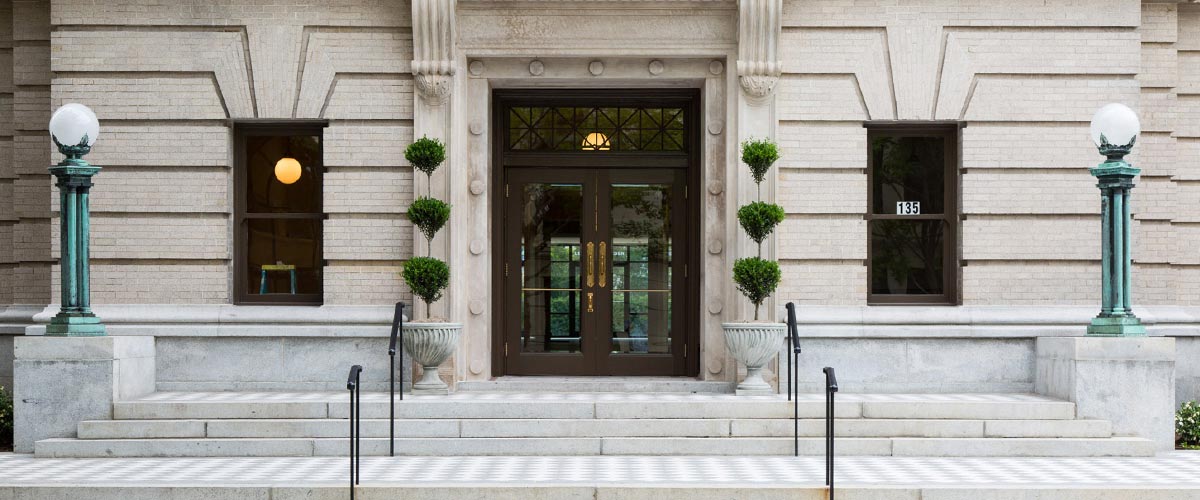

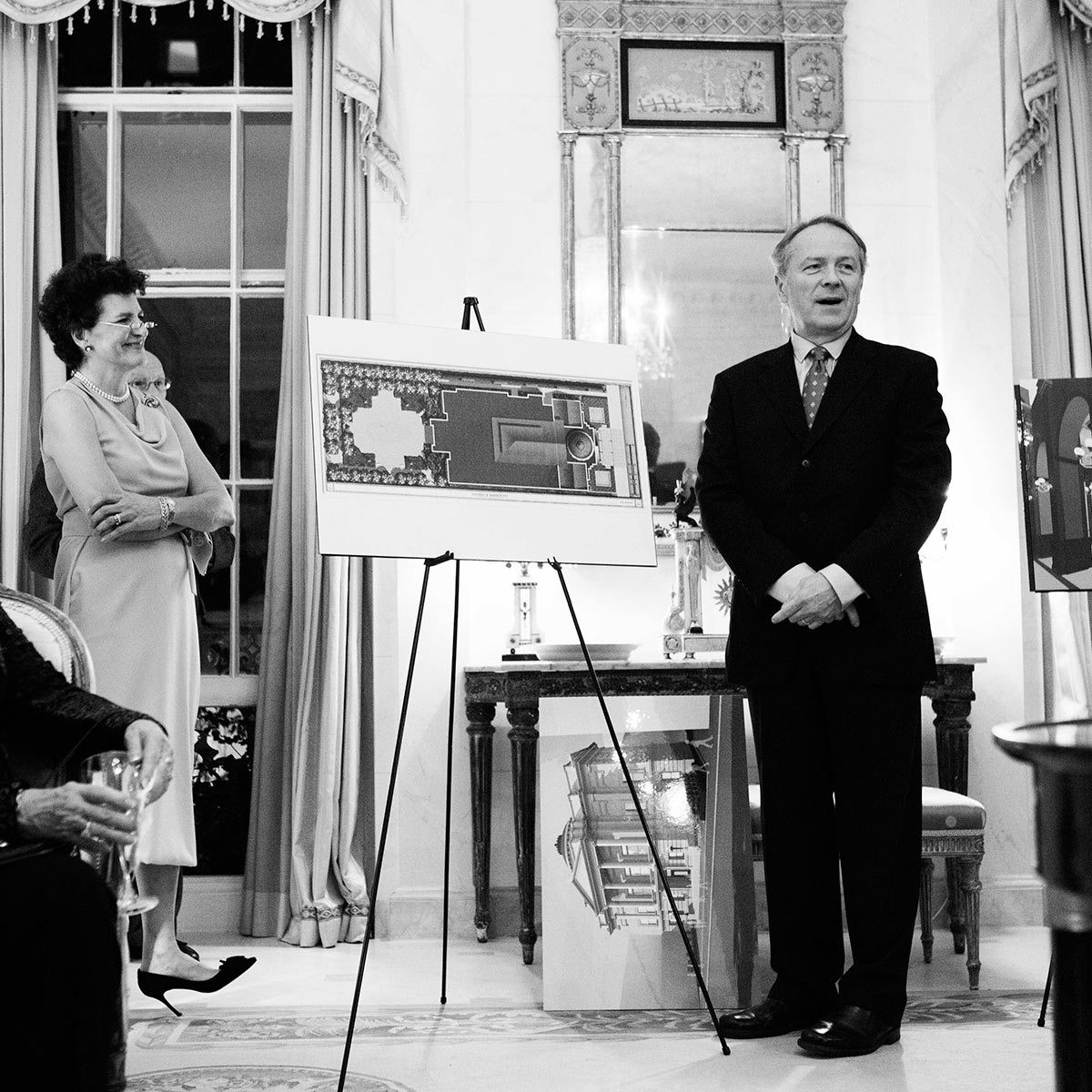
In March 2011, the Gibbes Museum of Art embarked upon a five-year, $13.5M capital campaign for a renovation ($11.5) and programmatic expansion ($2M) with diverse revenue streams to ensure financial sustainability. To-date, we’ve raised over $12M and are poised to complete the campaign and reopen the renovated facility in 2016.
Steeped in history, the Gibbes is ever evolving to reflect the cosmopolitan American city it calls home. A beautifully expanded Museum store and new café greet visitors as they enter. In a return to the Museum’s origin as an academy-style institution, the first floor of the renovated Beaux-Arts building serves as the center for education and community engagement. In new on-site studios, classrooms, and lecture space, the Museum increases opportunities for hands-on, engaged learning. Reception and lecture spaces are connected to the Lenhardt Garden and provide the ideal setting for corporate meetings, intimate dinners, and receptions.
Gallery space on the second and third floors increased by 30%, and allows for installations that focus on Museum highlights including our Miniature Portrait collection. The third floor features galleries dedicated to special exhibitions, and a new state-of-the-art storage facility with a viewing platform that provides visitors an opportunity to see conservators, preparators, and collections managers at work.

The Gibbes responds to the needs of diverse audiences. As one of the world's most visited destinations, Charleston brings highly educated tourists to the area. The renovated museum is a gateway to the region’s cultural heritage, offering space for reflection and inspiration. The Gibbes is also the primary visual arts resource for students and teachers in the tri-county region, serving thousands of PreK – 12th grade and college students each year. Addressing key themes and ideas found in the permanent collection and special exhibitions, our interactive programs develop intellectual and aesthetic skills while addressing South Carolina Learning Standards.
Classrooms with state-of-the-art technology allow the Museum to share a wealth of information with groups of students and link directly to local schools. By making equipment compatible, both museum educators and school teachers enhance their lesson plans with museum and exhibition content. Expanded education and enrichment programs provide additional teacher training opportunities and curriculum tailored to specific learning levels and state learning goals for PreK – 12th grade. The new spaces and technology double our previous outreach numbers from 15,000 to 30,000 PreK – 12th grade students served.
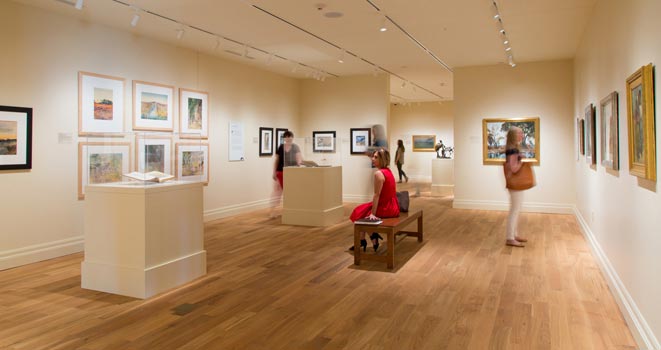
Spacious galleries on the second floor – including the Museum's stunningly restored Campbell Rotunda Gallery – showcase the Gibbes’ outstanding collections of art of the American South. Perhaps best known for the finest collection of works from the Charleston Renaissance (1915–1940), the Museum houses a distinguished collection of miniature portraits. It’s also home to one of the oldest, most comprehensive collections of Japanese woodblock prints formed in America, which reflect regional collecting tastes and influenced Charleston Renaissance painters. The portrait collection spans 300 years and includes the largest public collection of works from America's first professional female artist, Henrietta Johnston (1674–1729), as well as some of the earliest portraits ever created in America. The Gibbes houses important regional landscapes, including scenes of eighteenth-century plantations and views of Civil War battles. The historic paintings collection is enhanced by excellent examples of early furniture and silver on loan from The Rivers Collection of Southern Decorative Art.
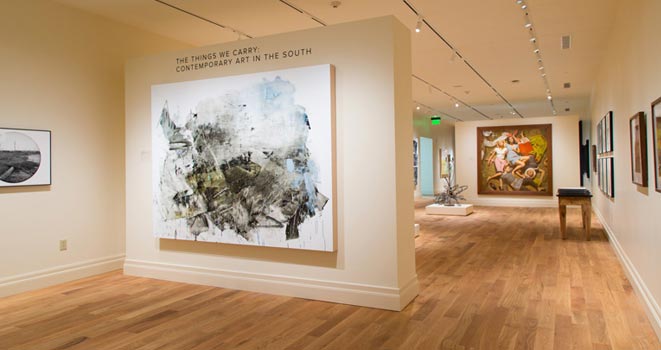
The third floor galleries showcase the Museum’s dynamic roster of special exhibitions. These exhibitions are designed as an experimental platform for engaging with art in new and exciting ways and challenging established interpretations. The program strives to promote creativity, introduce new art forms, provide perspective on larger community issues, encourage freedom of thought, and connect with the broadest possible audience. The special exhibition galleries change every three months offering an exciting array of contemporary one-person exhibitions, site-specific installations, and thematic group shows.
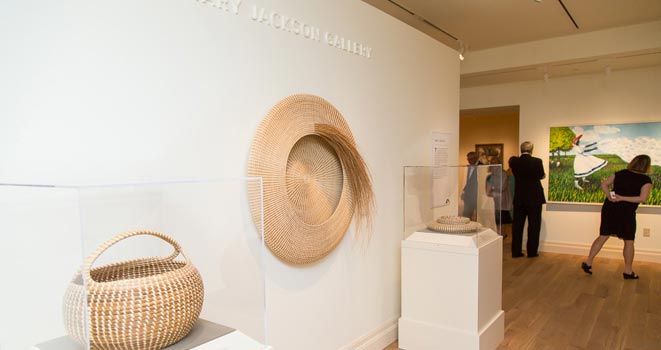
A recipient of the MacArthur Genius Award in 2008, Mary Jackson is an international treasure whose work is prized by collectors and scholars alike. This recognition has brought the Gullah tradition of coiled basketry, one of the oldest art forms of African origin, to national and international prominence. Her renown brings attention to an art form threatened by development, cheap imports, and an aging population of artists.
With the Mary Jackson Gallery, we highlight Mary Jackson as a living symbol of the Lowcountry and publicly honor her art, achievements, and the centuries of tradition that informed them. The gallery will showcase our growing modern and contemporary collection by featuring traditional and non-traditional art forms that together offer the full spectrum of the history of art from this region. From Jasper Johns and Merton Simpson to Mary Jackson and Carrie Mae Weems, the complete story of modern and contemporary art will be told in the Mary Jackson Gallery.
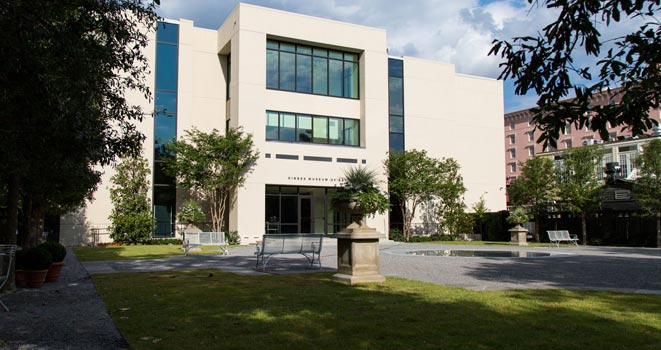
Central to the renovation is the Lenhardt Garden, a classical garden with contemporary touches, which together with the Gibbes Museum will transform Charleston’s most historic block into a vibrant arts learning center for all to enjoy. Through a repurposed indoor/outdoor space that links Meeting Street’s Museum Mile to King Street's retail/dining center, the Gibbes will offer art-filled access to the Gateway Walk, a beautiful pedestrian path through the heart of Charleston’s most historic district. The Lenhardt Garden adds significant public green space to Charleston's downtown area, and invites residents and visitors alike to experience the historic Gateway Walk and the best that our city has to offer.